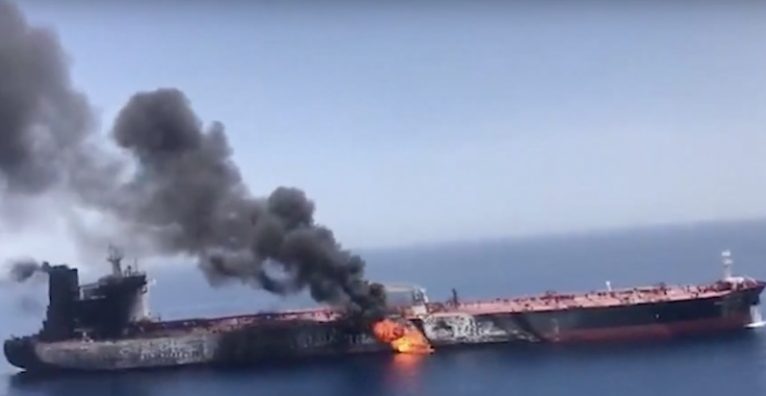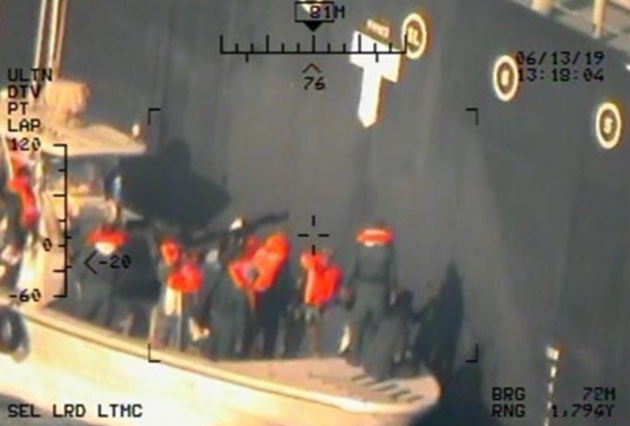US narrative on Hormuz attacks questioned

The US narrative that Iran is to blame for the tanker explosions in and around the Strait of Hormuz over the last couple of months has been questioned by other parties linked to the attacks.
“Honestly we can’t point the blame at any country because we don’t have evidence,” the United Arab Emirates’s foreign minister Sheikh Abdullah Bin Zayed Al Nahyan said on Wednesday in Moscow. “If there is a country that has the evidence, then I’m convinced that the international community will listen to it. But we need to make sure the evidence is precise and convincing.”
President Donald Trump and senior members of his administration have repeatedly said Iranian special forces used limpet mines to attack the ships. Senior Trump officials have been in the Middle East in the past week trying to drum up support for an international naval coalition to move merchant ships through the narrow waterway where one fifth of the world’s oil flows.
While an investigation presented to the UN Security Council by the UAE, Norway and Saudi Arabia concluded that a “state actor” was most likely behind the attacks on four tankers off Fujairah in May, no nation was singled out.
The UAE foreign minister revealed yesterday that US-led naval patrols are pressing ahead. The US Navy was building a “proactive deterrence” programme that would see a coalition of nations provide both material and financial contributions in this regard, the minister said.
Meanwhile, the Japanese owner and the Filipino crew of a product tanker attacked on June 13 continue to contradict the US military version of the attack.
Yutaka Katada, president of the Kokuka Sangyo shipping company, has repeatedly said the Filipino crew of the Kokuka Courageous tanker thought their vessel was hit by flying objects rather than a mine.
“The crew are saying it was hit with a flying object. They say something came flying toward them, then there was an explosion, then there was a hole in the vessel,” Katada told reporters earlier this month. “Then some crew witnessed a second shot.”
The US said the Japanese tanker was attacked by limpet mines and released a video that it said showed men aboard an Iranian boat removing an unexploded mine from the Kokuka Courageous.
Katada has disputed this however. “To put a bomb on the side is not something we are thinking,” he said. “If it’s between an explosion and a penetrating bullet, I have a feeling it is a penetrating bullet. If it was an explosion, there would be damage in different places, but this is just an assumption or a guess.”


IRGC troops has spayed this US attack earlier and it was the best chance to capture in acted bomb to investigate it’s technology. This is why US has this footage just at the happening time
It should be questioned does US take footage of all vessels 24 hours a day in Hurmoz zone????
USA for once is correct
This is the job of the MKO, the anti Iran terror group supported by the US in collusion with Saudi Arabia.
Who still believes the US at this point?